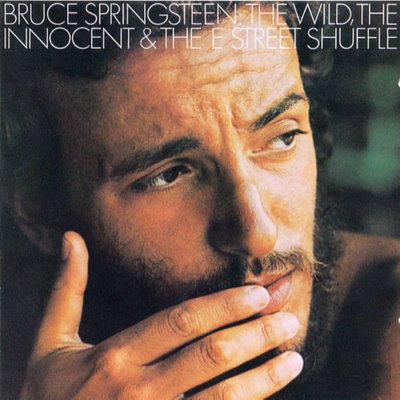
The Wild, The Innocent, and The E Street Shuffle (1974)

1. The E Street Shuffle
2. 4th of July, Asbury Park (Sandy)
3. Kitty's Back
4. Wild Billy's Circus Story
5. Incident on 57th Street
6. Rosalita Come Out Tonight
7. New York City Serenade
It is a curious phenomenon in popular music that some of the most transcendent records remain, for many, undiscovered. Bruce Springsteen’s second studio album, The Wild, the Innocent & the E Street Shuffle, falls squarely into that category. Released a mere seven months after his debut and still unknown to the wider world beyond Asbury Park, it barely registered on commercial charts at the time. Yet, judged purely on musical and lyrical ambition, it stands not only as Springsteen’s finest hour, but as one of the most fully realized rock albums ever committed to tape.
Where his debut was a whirlwind of street poetry and youthful fervor, this follow-up offers something grander—more expansive in scope, deeper in tone, and strikingly cinematic in its execution. The poet remains, now more confident and detailed, conjuring a vivid cast of urban saints and sinners—Kitty, Spanish Johnny, Wild Billy, Diamond Jackie, and of course Rosalita—each character more lived-in than the last. It is not that they form a cohesive narrative; they don’t. But together, they inhabit a mythic Jersey City of the imagination, where alleyways turn into opera houses and backstreets hum with romance and regret.
Musically, the album defies easy classification. It leaps between genres with remarkable fluidity: the brassy carnival of Wild Billy’s Circus Story, the Latin-tinged sway of Incident on 57th Street, and the uncontainable joy of Rosalita (Come Out Tonight), which builds with the unrelenting energy of a theatre curtain call. Yet perhaps the pinnacle of the album’s ambition lies in New York City Serenade—a nine-minute suite that opens with a somber piano prelude before blossoming into orchestral rhapsody, echoing Van Morrison’s Astral Weeks in its structure and emotional reach. It is, quite simply, a tour de force.
The E Street Band—though still in its early evolution—proves instrumental to the record’s depth. Under the direction of co-producer Mike Appel, the arrangements are dense yet never cluttered, eclectic without losing coherence. There’s tuba, accordion, and glockenspiel here, but also restraint, timing, and a sense of theatricality that supports rather than distracts from the songs.
It is often said by early adherents that Springsteen never surpassed his pre-Darkness output—a claim easily dismissed when applied to the breadth of his career, but harder to refute when considering the artistic completeness of this album. The Wild, the Innocent & the E Street Shuffle contains no radio hits, no chart anthems, and no stadium-ready slogans. But it delivers something rarer: a fully immersive, self-contained world—youthful, ambitious, and utterly alive.
This is not merely a great Springsteen album. It is the sound of rock and roll discovering new terrain, at once joyous and sorrowful, streetwise and symphonic. A masterpiece by any standard.
Go back to the main page
Go To Next Review